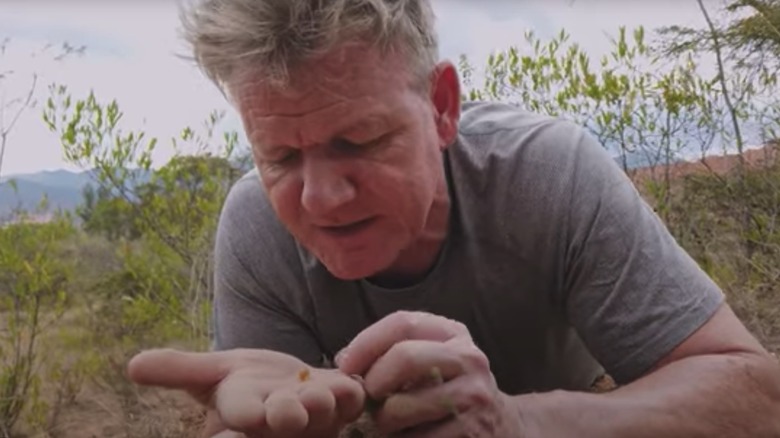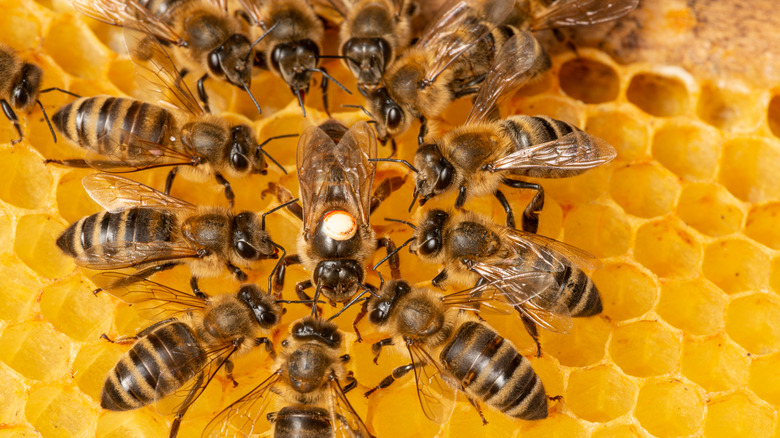Gordon Ramsay's Biggest Surprise Eating Honey Ants On 'Uncharted'
When National Geographic's "Gordon Ramsay: Uncharted" took Chef Gordon Ramsay to Mexico — specifically the desert of the state of Oaxaca — he surely expected to find a few of the foodstuffs for which the region is celebrated, like the Pasilla Oaxaca chili pepper or perhaps some of the famed Oaxacan mole sauces (via World Spice Merchants). What the chef was not likely suspecting was that we would be sucking honey out of the belly of ants unearthed from the desert sands.
As it turns out, Oaxaca is home to a unique insect called the honey ant. They are so named because the ants source nectar from flowers near their underground lair and convert the sugary nectar into a sweet honey. This honey is used to feed other residents of the ant colony, but unlike the honey produced by bees, it is not sequestered away in combs, but is carried around by individual ants in the form of little amber-colored balls (via National Geographic). These spheres of honey are actually the distended stomach of the ant, so to consume the little sweet treat, a human being must essentially bite into the belly of the ant. The insect does not die, however, and can be released again after the honey has been eaten.
But what does honey ant honey taste like? According to Ramsay, who was pleasantly surprised, it's "F—ing delicious. It tastes like a sort of sweet honey cider vinegar" (via Foodsided).
What other insects produce honey?
It takes a lot of bees to make enough honey for human consumption. In fact, in its six or so week lifespan, the average worker bee produces less than a gram of honey, according to How It Works Daily. That means it takes about 12 bees to produce a single teaspoon of honey. So it's pretty amazing that in the United States alone, bees can create more than 155 million pounds of honey in a single year, per Bee Culture.
Even more surprising is the fact that several other insect species also produce honey. According to Inverse: "By definition, honey is a sweet, sticky substance that insects make by collecting and processing flower nectar." That definition, you'll note, says nothing about bees specifically. A few of the closer relatives to the honey bee also produce honey, such as the bumblebee and some species of wasp. Then you have honey ants, like the ones Gordon Ramsay sampled in Mexico. Properly called "repletes" and often known as honeypot ants for the way they carry around honey in their bellies, these ants are highly productive honey makers and capable of swelling their abdomens to many times their normal size.
Inverse notes certain species of aphid can also produce a honey-like substance usually called honeydew. Though a different consistency than traditional honey, the liquid is sweet and sugary and is often, as it happens, consumed by bees and honey ants and later turned into proper honey.

